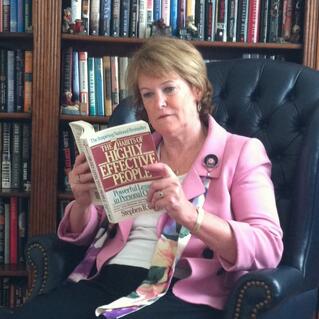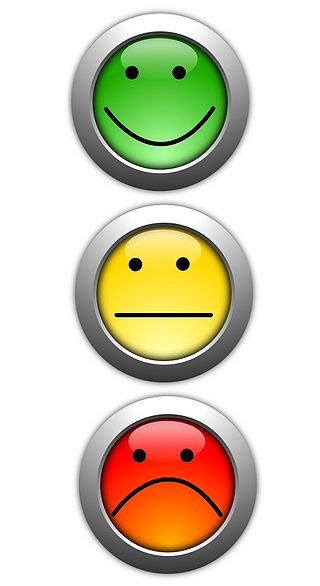Growth Insights for CEOs
The Chief Outsider
Recent Posts

Outsider Insights | From Hustle to System: Why More CEOs Are Rebuilding Their Sales Function
Outsider Insights
Across Chief Outsiders, we talk to hundreds of CEOs every month. In this new series, we explore the trends and challenges we’re hearing from these discussions – and what you can do if you’re facing the same issues in your business.
Recent Posts

Gone, But Not Forgotten: Stephen Covey
Wed, Jul 18, 2012 — A Big Impact I went to my bookshelf yesterday when I heard the news. There aren’t many books I have kept over the years but “The 7 Habits of Highly Effective People” is one of them.” My edition is from 1990, the First Fireside Edition. When I read it, I was a new manager, struggling to do my best.

Embrace Social Media--You Know You Have To, But How?
Mon, Jul 16, 2012 — What About Some Lessons? Many CEOs/CMOs have been persuaded (some dragged kicking and screaming) to the value of social media and other inbound marketing techniques. However, being persuaded of the value and knowing what to do are entirely different issues. It's overwhelming. It's a bit like persuading your "unmotivated" teenager of the value of a college education and then getting them to actually study. You have successfully persuaded them of the long term value, but the short term work it is going to take is a different story.

Iterate to Target Rate: Digital Marketing Rewards Experimentation
Wed, Jul 11, 2012 — What does it mean to Iterate? Wikipedia defines it as "the act of repeating a process, usually with the aim of approaching a desired goal or target or result. Each repetition of the process is also called an 'iteration,' and the results of one iteration are used as the starting point for the next iteration."
Stay up-to-date with the latest from Chief Outsiders

Rising Above Organic Growth
Sat, May 5, 2012 — A successful small to medium size business often runs the risk of feeling “too comfortable." Even though revenue is coming in, your customers like you, and your sales force is calling on customers regularly, you aren’t seeing the growth you are looking for. This lack of desired growth may be a result of new competitors, new products or services in the market, or that the market itself is growing stagnant. Get Outside Your Comfort Zone If any or all of these things are happening it should cause you to take a hard look at your business and consider going out of your comfort zone to continue to grow. It may be time to consider looking for new markets for your product. If you've grown comfortable selling to one or a few vertical markets, going beyond them may cause fundamental changes in your company. You may have to learn new industries, call on different kinds of buyers, and maybe have to recruit new sales people with knowledge of this new category. Market Expansion Most of all, you will have to take a hard look at your business and decide what kinds of problems you can be solving for new and different companies. Really getting into the guts of your business and looking beyond the obvious answers can sometimes be a painful exercise. You may be required to change the culture of your company in order to accommodate this new market opportunity that you have uncovered. But, the growth that comes with it is definitely worth the effort.
Too Broad a Brush: The Lack-of-Focus Problem
Wed, Apr 11, 2012 — Perhaps the most common issue I see among all kinds of businesses, from startups to large, established firms, is a lack of focus in their marketing. This generally takes the form of what I call taking too broad a brush to the market — throwing broad, scattershot strategies at the market in the hopes that some of it will stick, instead of pinpointing the most lucrative opportunities and then choosing the right applications — the right brush, if you will — to get the most of out those opportunities.

3 Steps to Improving Customer Retention
Wed, Mar 28, 2012 — As someone who once helped the pest control giant Terminix exterminate a nasty customer retention problem, I've seen what a difference a few strategic adjustments can make. So if you're facing the same issue, let me assure you that there are steps you can take to stamp it out.

New Twist to Executive Staffing: Think EaaS
Tue, Feb 14, 2012 — Executives for Rent While management consultants, marketing agencies and executive staffing have been around for decades, the notion of “hiring” just the amount of executive talent you need is something relatively new. It wasn’t until 1993 that John and Doug Tatum founded the firm that became synonymous with fractional CFOs. Their part-time executives join companies that can’t justify a full-time chief financial officer. Over time, Tatum grew to offer CIOs, COOs, and other “Os”. Jim McBride, senior managing member of Blue Sage Capital here in Austin, TX, once said to me, “if one of our companies needs a CFO, I know I can pick up the phone, call Tatum, and it’s done.” Great Idea for Marketing Execs Clearly, our firm Chief Outsiders is fashioned after this model. We see a growing demand for part-time or interim chief marketing officers. We’re even running ads now that say, “Why Hire a CMO?…When You Can Rent One, Fast.” So what’s all this about? Is this new model for executive staffing here to stay? We certainly think so. In some ways, it was inevitable. It’s even similar to shifts in other markets, including how people access technology services.

Marketing vs. Sales: Turning Antagonism into Alliance
Wed, Feb 8, 2012 —

The Challenges of Introducing New Medical Technologies
Mon, Jan 30, 2012 —
.png?width=1500&height=398&name=CO_Corporate%20Logo%202021_4C_HOR_FNL-1%20(1).png)